TRIANTHEMA
Trianthema
L., Sp. Pl. 1: 223. 1753; Clarke in Hook. f., Fl. Brit. Ind. 2: 660. 1879; Gen. Pl. ed. 5. 105. 1754; Boiss., Fl. Or. 2: 766. 1872; Kashyap, Lah. Dist. Fl. 117. 1939; Jafri, Fl. Kar. 115. 1966.
Herbs, annual or perennial. Stem procumbent to ascending, spreading, much branched from base, branching diffuse. Leaves opposite or subopposite, petiolate, those of each pair unequal; stipules attached to margin of petiole laterally; petiole expanded at base forming a sheath around stem; leaf blade terete or flat, linear to orbiculate, base tapered, margin entire. Inflorescence axillary, flowers solitary or in cymes, sessile or pedicellate, bisexual, actinomorphic, perigynous; bracts 2, foliaceous. Perigone tube (Hypanthium, Calyx tube) campanulate, short to long, smooth or hairy. Calyx lobes 5, petaloid, adaxial surface coloured, white, green or pink to purple. Petals and petaloid staminodes absent. Stamens perigynous, 5-10 (-26), adnate with perigone and calyx. Pistil 1, 2-carpellate; ovary superior, with a truncate or impressed apex, 1-2-locular, placentation basal; stigma 1. Fruit capsule, membranous or coriaceous, dehiscence circumscissile near base; operculum flat, ovoid with 1 or 2 seeds falling off as a whole. Seeds triangular, globose or reniform, brown to black, ridged, smooth or papillate.
29 species
Trianthema portulacastrum
Trianthema portulacastrum
L., Sp. Pl. 1: 223. 1753; Nasir in Nasir & Ali, Fl. W. Pak. 41: 5. 1973; Sharma & Kachroo, Fl. Jammu (Illustr.) 2: t. 106. 1983; Kaur & Sharma, Fl. Sirmaur 317. 2004; Singh & Sharma, Fl. Chamba Dist. 343. 2006; Jafri, Fl. Kar. 115. 1966; Fl. Pak @ eFloras.org; Fl. China @ eFloras.org 5: 441; Fl. North Amer. @ eFloras.org vol. 4: 83; T. monogyna L., Pl. 69. 1761; Clarke in Hook.f., Fl. Brit. Ind. 2: 660. 1879; Fl. Ind. (ed. Carey) 2: 445. 1832.
Annual herb. Stems procumbent, diffusely branched, branches up to 60 cm or more; branches subterete or slightly angular, glabrous or pubescent when young. Leaves opposite or sub-opposite, those of each pair unequal; petiole 4-20 mm long, base expanded into sheath ca. 2-2.5 mm long, sheaths of opposing leaf bases form a cup; petiolar sheath with 2 small lateral stipular appendages; leaf blade elliptic to ovate, obovate or obcordate, 0.5-5 cm x 0.4-4.5 cm, thinly fleshy, base cuneate, apex obtuse truncate or acute, margin entire and purplish pink. Flowers usually solitary, sessile, in the axils of smaller leaves (bracts) of some pairs, partly covered by sheathing stipules and connate bracteoles, bracteoles 2.5 mm x 1 mm, apex apiculate, purple pink. Calyx tube (Hypanthium or perigonium) closely sheathed by the petiolar base; calyx lobes 5, 5-6 mm x ca. 3 mm, lanceolate or oblong, petaloid, adaxial surface white or pink, obtuse with subapical abaxial mucronate spur, abaxial surface hairy. Petals and petaloid staminodes absent. Stamens perigynous, 15-26, adnate with hypanthium (perigonium) and calyx, unequal; filaments 2.0-3.5 mm long; anthers 0.75 mm x 0.5 mm, dorsifixed. Pistil 1, 2-carpellate, ovary superior with an impressed apex, 2- locular, placentation basal, ovules many; style 1, linear, ca. 2 mm long, longitudinally papillate; stigma 1. Pyxidium (capsule) cylindric, +/- curved, 4-7 mm x 4-5 mm, coriaceous, membranous at base; truncate at apex, apical wings 2, prominent, erect, crest- like; operculum 2.5-3.0 mm broad; dehiscence circumscissile at base; amphora 4-5 seeded. Seeds ca. 2 mm broad, reniform, black.
Common Names: Desert Horse Purselane, Black Pigweed, Giant Pigweed, Horse Purselane; Sabuni, Salsabuni, Svetsabuni, Vishakhapara (Hindi)
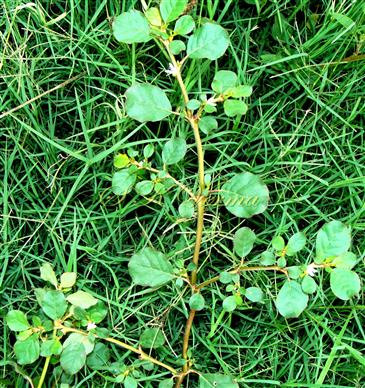
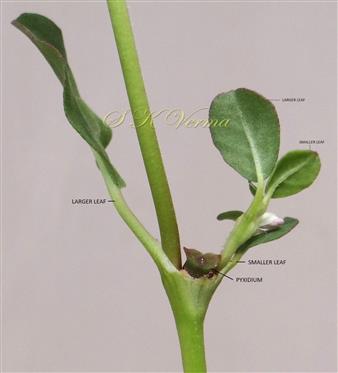
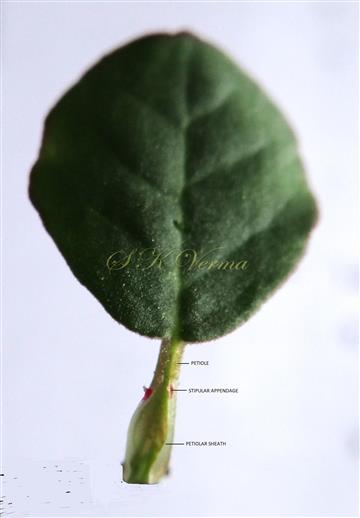
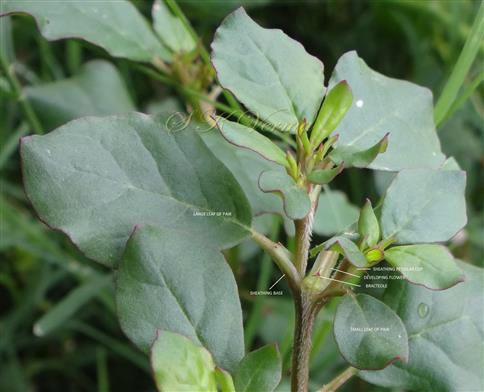
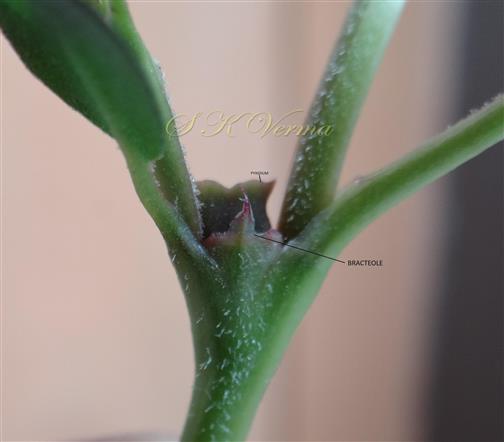

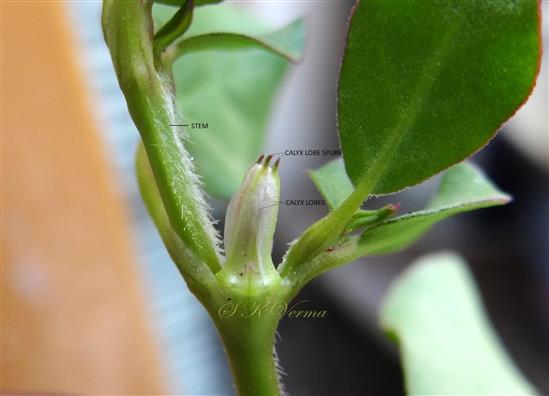
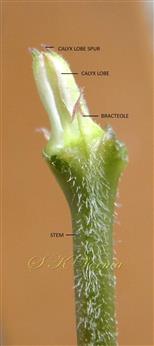
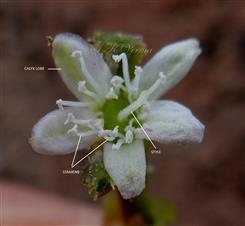
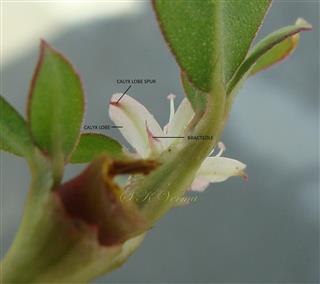
-1321.jpg)
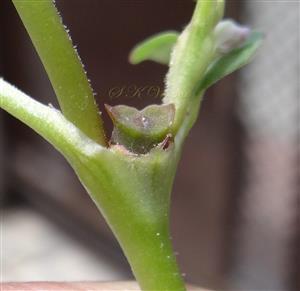
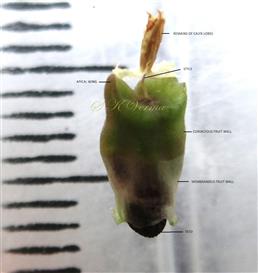
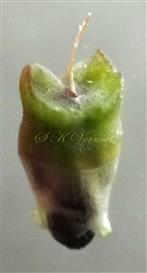
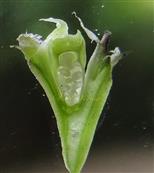
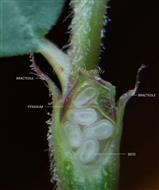
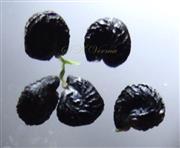











-1321.jpg)





